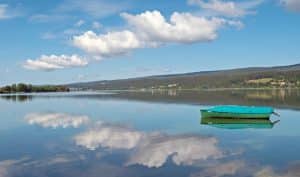Arctic Dog Sledding: Indigenous Transport Skills
The Arctic region is one of the most remote and harsh environments in the world. With its frigid temperatures, icy landscapes, and long winters, this unforgiving region has presented many challenges for the people who call it home. Yet, for the indigenous communities who have lived in the Arctic for centuries, these challenges have also sparked a sense of ingenuity and resilience. One of the most remarkable skills of these communities is their ability to navigate and travel through the Arctic using dog sledding. In this article, we will explore the rich history and cultural significance of Arctic dog sledding and how it has become an integral part of indigenous transportation in the North.
The Origins of Arctic Dog Sledding
Dog sledding has been used by indigenous communities in the Arctic for thousands of years as a primary mode of transportation. The origins of this practice can be traced back to the ancient cultures of the Inuit, Yupik, and other indigenous groups who inhabited the Arctic region. These communities relied on dog sledding for hunting, fishing, and trading as they traveled across the vast and harsh landscapes of the North.
The Native Alaskan and Canadian Inuit peoples, in particular, have a deep connection with dog sledding. They have developed a strong bond with their sled dogs, which they consider to be their most valuable partners in survival. These dogs, known as Malamutes, Huskies, and Inuit Sled Dogs, were bred specifically for the purpose of pulling sleds and navigating through the Arctic terrain. Their strong, muscular bodies and thick coats make them well-suited for the harsh climate and long journeys.
The Art of Dog Sledding
Training and Communication
Dog sledding is not just about attaching a team of dogs to a sled and taking off into the wilderness. It is an art that requires a deep understanding of the dogs and the environment. The process of training sled dogs starts at a young age, and it is a collaborative effort between the dogs and their musher (dog sledding driver). The musher communicates with the dogs using a variety of commands, including “hike” (go faster), “whoa” (stop), and “gee” (turn right), and “haw” (turn left).
Aside from verbal commands, the musher also relies on body language and hand signals to guide the dogs. This requires a strong and trusting relationship between the musher and the dogs, as they navigate through treacherous terrain and changing weather conditions.
Equipment and Navigation
One of the most essential pieces of equipment in dog sledding is the sled itself. Traditional Inuit sleds, known as “qamutiik,” were made from driftwood and caribou bones. They were lightweight, durable, and designed for the rough terrain of the Arctic. Today, sleds are made from stronger materials such as fiberglass and aluminum, but they still maintain the same basic shape and design.
Navigation is also a crucial skill for dog sledding. Before the invention of modern technology, the Inuit people used landmarks and natural features to navigate their way across the Arctic. This skill has been passed down through generations, and many modern mushers still rely on traditional methods of navigation, such as using the position of the sun and stars or reading the patterns of the snow and ice.
The Cultural Significance of Dog Sledding
For indigenous communities in the Arctic, dog sledding is more than just a means of transportation; it is an essential part of their culture and way of life. Dog sledding is deeply rooted in rituals, beliefs, and values that have been passed down for centuries. Many communities continue to hold annual dog sledding races and cultural festivals to celebrate this tradition.
Dog sledding is also closely tied to the spiritual beliefs of these communities. The Inuit people, for example, have long believed that the sled dogs have a spiritual connection to the land and the people. It is said that when a dog dies, its spirit returns to the land to guide and protect their people.
In Conclusion
In the vast and unforgiving Arctic, dog sledding has been an essential and enduring skill for indigenous communities. It has allowed them to not only survive but thrive in an environment that many would find inhospitable. Today, dog sledding continues to be an integral part of the cultural identity of these communities, and it remains a testament to their resilience, resourcefulness, and connection to the land and their beloved sled dogs.
Whether you are an adventure seeker looking to experience this unique form of transportation or simply interested in learning more about the indigenous cultures of the North, dog sledding in the Arctic is an experience like no other. It is a way to connect with the rich history, skills, and traditions of these communities, and to experience the stunning beauty of the Arctic environment from a unique perspective.






